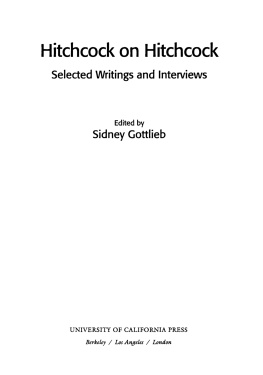First published 2000 by Ashgate Publishing
Published 2016 by Routledge
2 Park Square, Milton Park, Abingdon, Oxon OX14 4RN
711 Third Avenue, New York, NY 10017, USA
Routledge is an imprint of the Taylor & Francis Group, an informa business
Copyright Michael Hitchcock and Wiendu Nuryanti 2000
All rights reserved. No part of this book may be reprinted or reproduced or utilised in any form or by any electronic, mechanical, or other means, now known or hereafter invented, including photocopying and recording, or in any information storage or retrieval system, without permission in writing from the publishers.
Notice:
Product or corporate names may be trademarks or registered trademarks, and are used only for identification and explanation without intent to infringe.
British Library Cataloguing in Publication Data
Building on batik: the globalization of a craft community.
- (University of North London voices in development
management)
1. Batik - Indonesia - History 2. Batik - Social aspects
Indonesia 3. Cultural property - Indonesia 4. Tourist trade
and art - Indonesia
I. Hitchcock, Michael II. Nuryanti, Wiendu III. University of
North London
306.48909598
Library of Congress Catalog Card Number: 99-76650
ISBN 13: 978-1-84014-987-6 (hbk)
ISBN 13: 978-1-138-26740-4 (pbk)
HELMUT SCHMIDT
Excellencies, ladies and gentlemen, let me thank you in the first place for inviting me, although I am neither an expert of tourism nor am I knowledgeable in the art of batik. I have to admit that it was the topic given to me by the hosts of the conference and that did intrigue me and attract me to visit Indonesia once again.
I have been in your country also on an earlier occasion and indeed my first plans to come to Indonesia I elaborated already in 1939.I was then about to finish my two years of recruited service due to being drafted in the German forces but I was so fed up with the Nazi dictatorship at home, that I decided to join the Shell Oil Company and emigrate to your beautiful country, which was then still a Dutch colony. But before my plans were carried out, Hitler started WWII and I had to serve another six years and never came here.
So my first visit to Indonesia only came about four decades later. And as regards Yogyakarta, this very weekend was the first time I ever saw this city, the Borobudur temple, as well as the Prambanan temple and as well Mt Merapi; not to mention the beautiful fashion show of last night. I must admit I feel overwhelmed by the serene beauty and the invaluable treasure of the two temples.
Now let me address the topic, Cultural Identity in an Era of Globalization, a concept that did not even exist 10 years ago. One of the aspects of globalization is the ever-quickening pace of traffic and transportation. Less than a century ago, one was using sailing boats between India and Java and it took months to sail from Surabaya to Europe. Today there are dozens of jet passenger aircraft loading masses of passengers every day at Jakarta airport. It takes only half a day to fly from Jakarta to Paris, and even less to fly to Beijing.
In other words, millions of people every day are meeting millions of foreigners; the distances are shrinking to a small fraction of what they used to be over centuries, and over millennia.
Another aspect of globalization is the enormous speed of communication. When I was a boy, one used to write postcards or letters and a letter from Hamburg to Batavia took more than one month. Today, you don't only have telephones but faxes by satellites. If something happens on the stock exchanges in Hong Kong or Bangkok, within seconds it creates an effect in Jakarta, Tokyo or New York.
This shrinking is the effect of an enormous development of technology whether in transportation or telecommunications. Plus, the new financing techniques; for example, today you can buy Japanese yen-denominated shares electronically and sell the paper again the same day in New York.
The new phenomenon in the last quarter of this century is the high speed of technological progress plus the high speed with which new technologies are freely disbursed and exported, and accepted as well all over the globe.
This is true in all fields, in commerce, in finance, or manufacturing, or military weapons, or in medicine, or in science as well as in television. This is a very high speed of dispersion of new technology that never happened in former centuries. For instance, it took the steam engine more than a century to spread from England to China. It took the passenger aircraft just a quarter of a century after it was developed in the West to be produced by your colleague Prof. Habibie in Indonesia. The compact disc or the cellular telephone needed less than a year to be spread all over the world.
In addition to technological globalization, the number of participants in the global economy has doubled over the past 20 years or so. For instance, all these 16 successor states of the Soviet Union that had been sealed off from the world's economy, all of them have become open states nowadays participating in the world's economy.
Moreover, in addition to this doubling of participating people and states, almost all of them have opened up their borders to a higher freedom of traffic and trade then ever before in history. We are today experiencing the highest degree of liberalisation that the world has ever seen.
Of course, economic globalization has offered great chances for developing countries, for low-wage countries, and never before have the nations in Southeast Asia enjoyed such a speedy economic progress, and such a speedy increase in their standard of living in real terms never, ever before.
On the other hand, in the old manufacturing industries in Eastern Europe, this same process has led to a loss of jobs. We are losing our jobs to Indonesia, for instance, and to other countries in Southeast Asia as well. The economic growth rates in Southeast Asia have been speeding up and the growth rates in Europe have gone down. This is the inevitable consequence [of globalization], as if globalization is only helping the Southeast Asians.
But globalization also entails severe economic risks as well financial risk, monetary risks in the quick growing economy of Asia. The present currency crisis in Thailand or Indonesia is the latest illustration of what I am saying. It is once again obvious that great chances do go hand-in-hand with great risks.
But then economic risks are not the only risks that are inevitably created by economic, technological, and communication-driven globalization. There exists as well psychological risks, there do exist educational dangers, and there does exist a threat to the cultural identity of whole societies and whole nations.
Psychological or even ideological adaptation of many businessmen, for instance, whether in Europe or Asia has presently led to an almost globalized trend towards speculation, and towards predatory capitalism. There is a growing temptation of financiers for their overriding purpose in their lives to become as rich as possible and as soon as possible.














